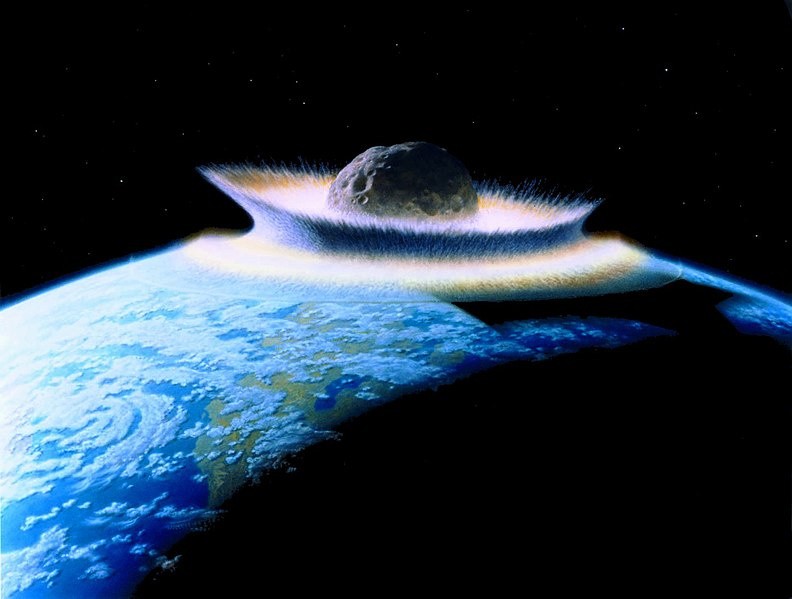Dinosaurs roamed the Earth for over 100 million years, yet their rule ended when a cataclysmic planet-killing space rock called the "Chicxulub asteroid" smashed into the planet and caused devastation in a global-scale.
Long-held notions suggested that the giant animals went extinct due to this catastrophic event alone, which occurred around 66 million years ago and led to the disintegration of other living organisms.
Now, a new study showed that the apocalyptic asteroid could be accompanied by another space object in the form of an asteroid or other meteorite almost at the same time.
This potential existence of the so-called "second asteroid" came after scientists found a new asteroid crater in Africa, which is thousands of miles away from the Chicxulub crater in the Yucatan Peninsula of Mexico.
Following the study, various scientific claims suggested that the second asteroid finished off the dinosaurs, which were possibly struggling from the devastating environmental impact of the first asteroid.
Africa's newly discovered crater is located thousands of feet underground and has not been directly studied before.
With new technology, experts recreated how the astronomical event could have unfolded.
Chicxulub has been reported to be the only well-preserved crater on Earth.
With the new impact crater named as the "Nadir crater," scientists could create a much clearer narrative of what truly occurred during the end of the Cretaceous period.
Furthermore, the unprecedented findings also prove existing notions that Earth is susceptible to rare yet deadly objects from the vacuum of space.
The Nadir Crater

In the new paper published in the journal Science Advances on Wednesday, August 17, researcher from the United States and the United Kingdom highlights evidence of the Nadir crater off the coast of West Africa, which is 8.5 kilometers wide and 300 to 400 meters below Paleogene sediment.
Its location is approximately located on the seafloor off the coast of the African countries of Guinea and Guinea-Bissau.
The geographical features of the creature are not evident at first.
However, the study's authors said they saw a roughly circular or elliptical hole which resemble that to a probable second asteroid, which they linked to be potentially connected with the Chicxulub crater, as cited by Live Science.
The Chicxulub Impactor
The Chicxulub impactor involved either an asteroid or comet that left a 93-mile wide and 12-mile deep crater in Mexico, killing not only dinosaurs but almost animal and plant species living on Earth during the said period.
Most asteroids of today are found in our solar system, especially in the asteroid belt, a region located between the orbits of Jupiter and Mars.
However, the origins of the Chicxulub asteroid have long been contested.
In February 2021, The Harvard Gazette, a news publication body of Harvard University, reported that a new theory could explain the possible origin of the Chicxulub impact based on a new study at that time and published in the journal Scientific Reports.
Using statistical and gravitational measurements, the 2021 research suggests Chicxulub was a fragment of a much larger comet from the Oort cloud, an area consisting of debris at the edge of the solar system.
© 2025 NatureWorldNews.com All rights reserved. Do not reproduce without permission.





